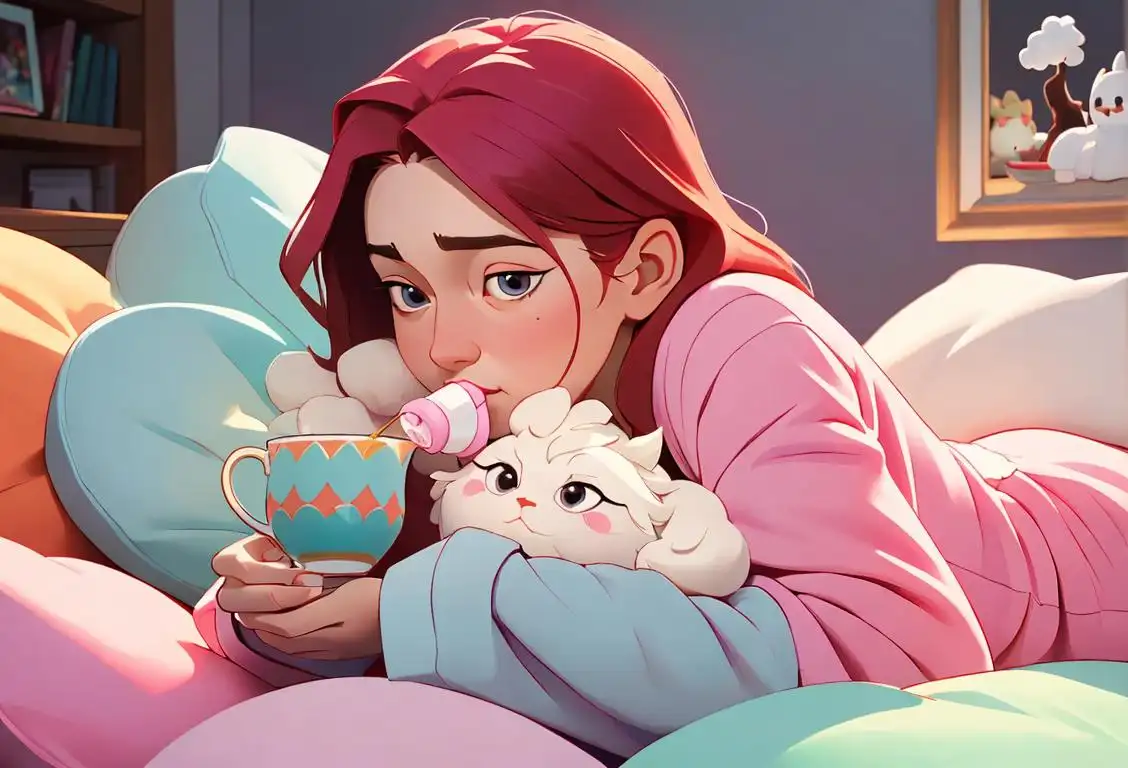National Frump Day

Get ready to embrace your inner frump because it's National Frump Day! This quirky holiday celebrates everything frumpy and encourages people to let loose and embrace their comfortable, laid-back side. Get ready to put on your favorite baggy sweater, slip into those worn-out slippers, and dive headfirst into a day of ultimate relaxation and coziness.
When is Frump Day?
It's national frump day on the 14th October.
The Origins of National Frump Day
While the internet may not have a concrete history of how National Frump Day came to be, we can imagine that it was created by someone tired of the constant need to be stylish and put-together. Let's face it, life can be exhausting, and sometimes all we want to do is curl up in our pajamas and binge-watch our favorite shows. National Frump Day gives us a free pass to do just that.
So, grab your favorite pair of mismatched socks, put on that oversized sweater you've been hiding in the back of your closet, and let's dive into the wonderfully cozy world of National Frump Day.
How to Celebrate National Frump Day
Celebrating National Frump Day is easy. First and foremost, you need to dress the part. Remember, the goal is to be as comfortable and cozy as possible, while still maintaining a level of charm. Pajamas, slippers, and bathrobes are all fair game, but try to avoid anything that might resemble a complete fashion disaster.
Once you're dressed to impress (yourself, that is), it's time to indulge in some frumpy activities. Spend the day lounging on the couch, watching your favorite movies or TV shows. Treat yourself to a cozy meal, whether it's a bowl of warm soup or a plate of your favorite comfort food. Find a good book and lose yourself in a fictional world for a few hours.
Fun Fact about National Frump Day
Did you know that the term 'frump' originally referred to a dowdy, unfashionable woman? However, over time, the meaning has evolved to encompass a broader definition of embracing comfort and relaxation. So, on National Frump Day, you can be a frump and proud of it!
History behind the term 'Frump'
1560
Emergence of 'frumple'
In the year 1560, the term 'frumple' originated in the English language. It was derived from Middle Dutch 'veromplen,' meaning 'to wrinkle,' and it referred to the act of crumpling or wrinkling something.
1560s
Origin of the term 'frump'
The term 'frump' originated in the 1560s and initially referred to a dull, unattractive, or dowdy person, particularly a woman. It was derived from the Middle English word 'frumple,' meaning to wrinkle or crumple. The term 'frump' was often used to describe someone who lacked fashionable attire or wore outdated clothing.
18th Century
Evolution into 'frump'
During the 18th century, the term 'frumple' transformed into 'frump' in the English language. It transitioned from describing the action of wrinkling to being used figuratively to describe a person who appeared dowdy or unfashionable.
1900s
Evolution of 'frump' in popular culture
In the early 1900s, the term 'frump' began to gain traction in popular culture. It became a popular slang term used to describe a person, often a woman, who exhibited a lack of style or elegance in their appearance or behavior. The concept of a 'frump' became associated with being unfashionable, conservative, and old-fashioned.
19th Century
Association with old-fashioned style
By the 19th century, 'frump' became synonymous with a person who exhibited a lack of style or elegance. It specifically referred to women who dressed in a plain, unflattering, or out-of-date manner, often favoring conservative clothing choices.
1950s
The rise of the 'frump' stereotype
During the 1950s, the idea of a 'frump' was solidified as a stereotype in society. In an era of heightened focus on fashion and style, a 'frump' was seen as someone who neglected their appearance or clung to outdated fashion trends. This stereotype often portrayed women who prioritized housework and family life over personal style and glamour.
1970s
Feminist reappropriation of the term
In the 1970s, feminist movements sought to challenge societal expectations of beauty and fashion. Some feminists embraced the term 'frump' and reclaimed it as a symbol of empowerment. They sought to redefine the concept of a 'frump' by emphasizing individual choices and rejecting the notion that personal worth is tied solely to appearance.
20th Century
Negative connotations solidify
In the 20th century, the term 'frump' gained more negative connotations. It started to convey not just a lack of fashion sense, but also a lack of social grace or attractiveness. The word became associated with someone who was unattractive, dowdy, or lacking in charm.
Present
Reclamation and broader meaning
In modern times, 'frump' has seen a reclamation of sorts. While it can still be used to describe someone who is unfashionable or lacking in style, it has also broadened its meaning. Some individuals proudly identify as 'frumps,' embracing a unique sense of style that challenges societal norms and rejects conventional beauty standards.
Present
Modern interpretations of 'frump'
In modern times, the term 'frump' continues to be used to describe someone who lacks style or appears unfashionable. However, there is an increasing recognition that personal style should not be a measure of a person's value. Cultural shifts have allowed for a broader acceptance and celebration of diverse styles and expressions of individuality, challenging the negative connotations associated with being a 'frump'.
Did you know?
Did you know that the term 'frump' originally referred to a dowdy, unfashionable woman? However, over time, the meaning has evolved to encompass a broader definition of embracing comfort and relaxation. So, on National Frump Day, you can be a frump and proud of it!Tagged
fun comfort relaxationFirst identified
14th October 2016Most mentioned on
14th October 2016Total mentions
4Other days
Stay In My Pajamas All Day
Frump Day
Goof Off Day
Nothing Day
Bubble Bath Day
Drop Everything And Read Day
No Housework Day
No Children Day
Slow Down Day
Eat Outside Day







